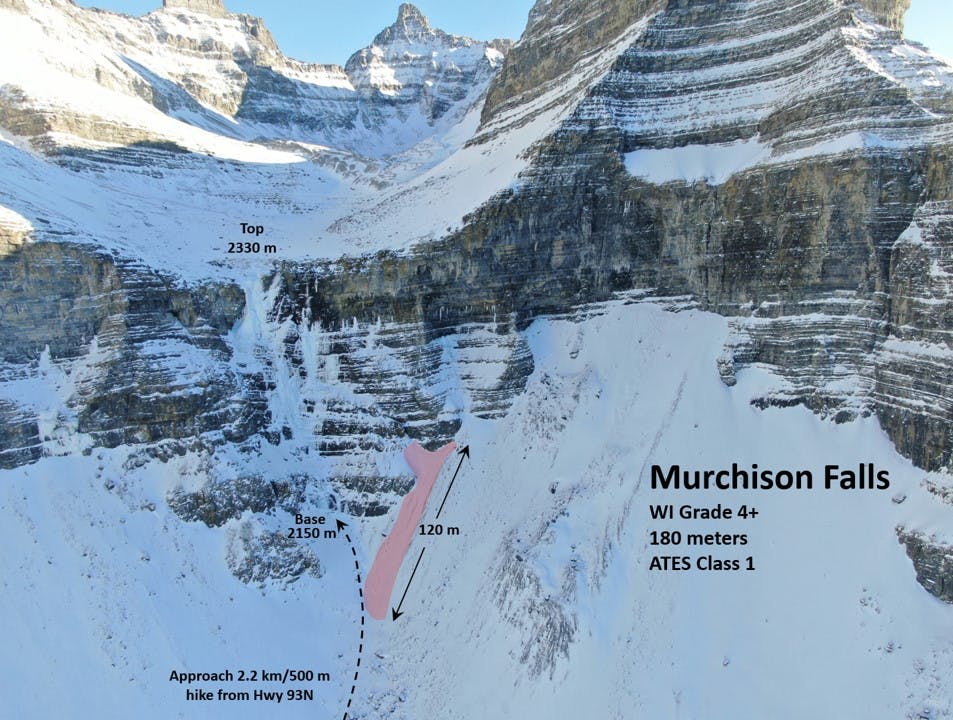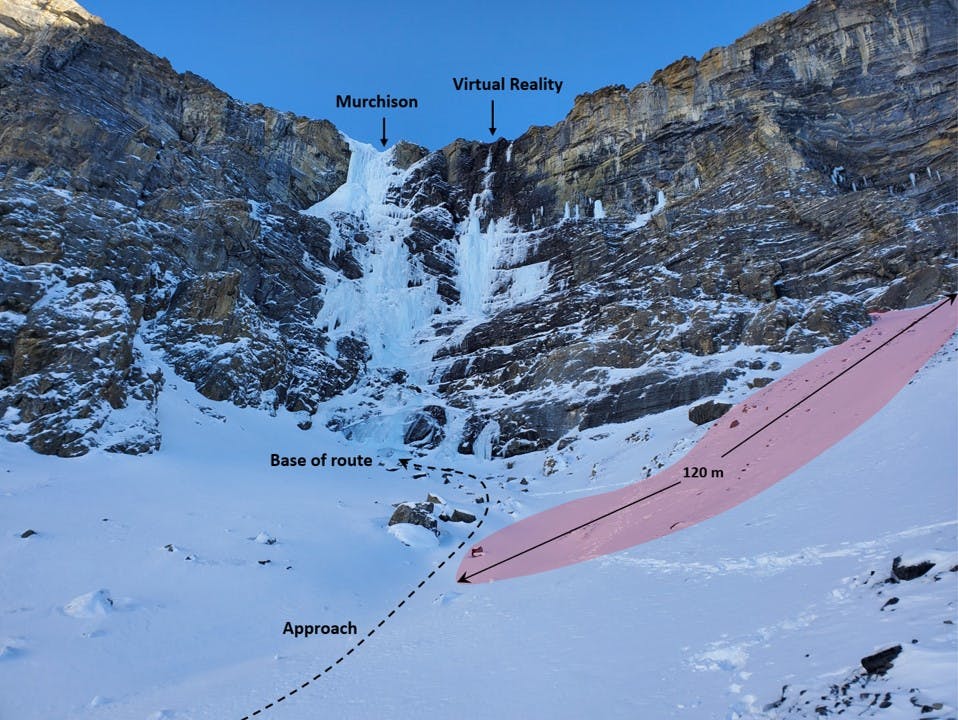
Murchison is a beautiful classic climb that has relatively low avalanche hazard. The main hazard is on the final leg of the approach from the right-hand fan and could potentially be managed by travelling slightly left to avoid the run out zone, depending on conditions. Murchison offers an amphitheatre of several classic climbs that don’t always form. Virtual Reality and Lessons of Oka are to the right and My Daddy’s a Psycho is to the left. The climbing can be engaging and challenging because of the often colder temperatures in the amphitheatre and constantly changing ice conditions, which can make for a longer day than one might expect for a climb of this length.
Popularity
37 people completed the survey
- 54% climbed Murchison 1–5 times
- 19% climbed it 6–10 times
- 27% climbed it over 10 times
Avalanche Frequency
- 68% have seen debris on the climb or below it, or on the walk off
- 32% have not seen any debris
- 5% have witnessed avalanches
Time of Year and Day
Most people ascended this climb in December to April and this was also when debris was most often reported. Fewer descents and avalanche debris were reported for October and November.
- 33% of avalanches were witnessed between 6:00am-12:00pm
- 33% of avalanches were witnessed between 12:00-18:00pm
- 33% of avalanches were witnessed after 6pm
Avalanche Start Zones
- 0% believe the avalanche started right above the climb
- 25% believe it started well above the climb
- 50% were human triggered on the approach
Avalanche Runout Distance Observed
- 63% saw debris at the base of the climb
- 11% have seen debris in between the pitches of climbing
- 0% saw debris above the last pitch
- 50-70 m runouts observed
Reported Avalanches and Incidents
- Avalanche witnessed one evening in 2001 during a period of high or extreme avalanche danger. A group triggered a size 2 and one person was partially buried but extracted easily.
- One person reported an incident near the base of the route, triggered while rappelling.
- Cornices often form at the top of Murchison to the left that are of concern.
Contributing factors in order of significance
- 40% were believed to be caused by warming and solar radiation
- 40% were believed to be caused by new snow amounts
- 80% were believed to be caused by winds
- 20% were believed to have failed on a known reactive layer
- 60% were believed to be cornice or human/animal triggered
Additional Notes from the Community
Murchison has no overhead avalanche hazard, except for the last 50-75 meters before you reach the base of the climb. Here there is a creek bed gully with an avalanche slope overhead on the right hand side. This exposure can be minimized by walking up on the left side of the gully.

Debris from size one avalanches is often reported on the slope on the right of the approach trail, near the start of the climbs. In winter, size 2-2.5 debris has been witnessed, including chunks of cornices. Debris accumulates under the climb, perhaps due to sluffing and small slides from the top pitch.
Virtual Reality can from fragile features. In the winter of 2020-21, the right-hand pillar was completely detached from its upper section, but this was not evident until on the climb.
Large collapses of daggers have also been reported from the upper curtain of Murchison in the early season.
There was a report of large roof of limestone around 10 meters wide and 3-4 meters thick that detached from the wall to the right of Virtual Reality, around 60-80 meters from the ground and hit the slope below. The reporter noted that had the slope been snowy, it would have been a significant avalanche trigger.